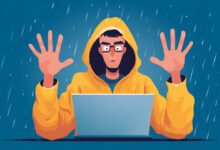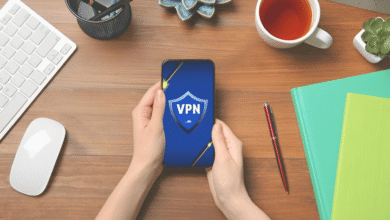Enhancing iPhone Security with Stolen Device Protection

In a digitally-driven era where our iPhones have become indispensable extensions of our lives, ensuring the security of these devices is paramount. The constant connectivity and the wealth of personal and sensitive information stored on our iPhones make them attractive targets for theft and unauthorized access. This article will delve into the intricate landscape of iPhone security, with a specific focus on the innovative concept of Stolen Device Protection. In an age where cyber threats are on the rise, understanding and implementing effective security measures is not just a choice but a necessity for iPhone users.
Enhancing iPhone Security with Stolen Device Protection
Underlining the core theme that revolves around fortifying the security of iPhones through advanced measures. In the following paragraphs, we will explore the current state of iPhone security, emerging threats, and the pivotal role played by Stolen Device Protection in mitigating the risks associated with the loss or theft of these prized devices. Stay tuned as we uncover the layers of security mechanisms and delve into the proactive steps users can take to safeguard their iPhones in an ever-evolving digital landscape.
Current State of iPhone Security
Apple has consistently set the benchmark for smartphone security. The inclusion of advanced biometric authentication methods such as Face ID and Touch ID, coupled with encrypted communication channels, establishes iPhones as leaders in providing a comprehensive suite of security features.
Read More: Top Industries That Can Benefit from Custom iPhone Apps Development
Rising Threats and Challenges
Despite Apple’s efforts, the digital landscape is in a constant state of evolution, giving rise to new threats and challenges. Cybercriminals are becoming increasingly sophisticated, exploiting vulnerabilities in operating systems and applications.
Understanding Stolen Device Vulnerabilities
One of the foremost concerns that iPhone users face is the potential loss or theft of their devices. Beyond the financial loss, the exposure of personal and sensitive data poses a severe risk to individuals.
Introduction to Stolen Device Protection
Stolen Device Protection is a concept designed to address these concerns proactively. It goes beyond merely tracking the device; it involves a holistic approach to safeguarding both the hardware and the data it contains.
How Stolen Device Protection Works
In the fast-paced world of technology, the fear of losing our devices or, worse, having them stolen is a constant concern. To alleviate this worry, smartphone manufacturers, including Apple, have introduced innovative features like Stolen Device Protection. Let’s delve into the intricacies of how this security measure operates, ensuring our devices and sensitive data remain in safe hands.
GPS Tracking: Pinpointing the Location
One of the primary functionalities of Stolen Device Protection is GPS tracking. When activated, this feature allows users to pinpoint the exact location of their lost or stolen iPhone on a map. Leveraging the built-in GPS technology, the device communicates its coordinates, offering real-time information to the owner.
Remote Locking: Fortifying Your Data
In the unfortunate event of a lost or stolen iPhone, remote locking becomes a powerful tool. Users can activate this feature, instantly rendering the device inaccessible to unauthorized individuals. This proactive step ensures that even if the physical device is out of reach, the data it holds remains secure.
Data Wiping: Eradicating Sensitive Information
The prospect of personal data falling into the wrong hands is a significant concern. Stolen Device Protection addresses this by offering a data wiping feature. Users can remotely erase all content on their iPhone, leaving behind no trace of personal information. This step is particularly crucial in safeguarding sensitive data such as financial details or personal conversations.
Sound Activation: Locating Your Device Nearby
Sometimes, our misplaced devices are not far from reach. Stolen Device Protection includes a sound activation feature that allows users to make their iPhone emit a loud sound. This aids in locating the device if it’s in close proximity, providing a simple yet effective solution for forgetful moments.
Third-Party Apps: Adding an Extra Layer of Security
While built-in Stolen Device Protection features are robust, users seeking additional layers of security can turn to third-party apps. These apps often offer enhanced functionalities, such as capturing photos of the thief using the device’s camera, tracking SIM card changes, and even triggering alarms. Integrating these apps can provide a more comprehensive security net.
Integration with Ecosystem: Find My iPhone
For Apple users, the integration of Stolen Device Protection with the Find My iPhone feature is noteworthy. This ecosystem-wide approach ensures that the device is not only traceable but also controllable remotely. Users can access Find My iPhone from other Apple devices, reinforcing the interconnected security infrastructure.
Tamper-Resistant Design: Foiling Thieves
Security is only effective if it’s resistant to tampering. Stolen Device Protection is designed with this in mind. Thieves attempting to disable these security features without the owner’s credentials face substantial challenges, making it significantly harder for unauthorized access.
Real-Time Notifications: Staying Informed
Stolen Device Protection keeps users informed in real-time. Upon activation or any significant event, such as an attempt to disable security features, users receive notifications. This immediate feedback empowers users to take swift action to secure their device and data.
Built-in Security Measures
Apple has seamlessly integrated robust security measures into its ecosystem. Find My iPhone, for instance, enables users to locate their device on a map, play a sound, remotely lock the device, or even erase its content to prevent unauthorized access.
Third-Party Apps for Added Security
For users seeking additional layers of protection, a variety of third-party apps specialize in stolen device protection. These apps often offer features beyond native capabilities, such as capturing photos of the thief, tracking SIM card changes, and even sounding alarms for added security.
Educating Users on Security Practices
Empowering users with knowledge is a crucial aspect of iPhone security. Simple practices like regularly updating software, using strong passcodes, and exercising caution with app permissions can go a long way in preventing unauthorized access and fortifying overall device security.
Balancing Convenience and Security
While security is of paramount importance, Apple recognizes the significance of a seamless user experience. Striking the right balance between robust security protocols and user convenience ensures that safeguarding your iPhone doesn’t come at the cost of usability.
User Experiences and Testimonials
Real-world examples serve as powerful testimonials, highlighting the effectiveness of stolen device protection. Stories of users successfully recovering their lost or stolen iPhones through these security measures emphasize the practical benefits of implementing such features.
Future Trends in iPhone Security
As technology advances, the landscape of cybersecurity evolves. Biometric advancements, artificial intelligence, and blockchain are among the trends poised to shape the future of iPhone security, promising even more sophisticated protective measures.
Comparative Analysis with Other Devices
How does iPhone security measure up against other smartphones? A comparative analysis reveals the strengths and unique features that set Apple’s devices apart in terms of security, showcasing the company’s commitment to staying ahead of the curve.
Myths and Facts About iPhone Security
Dispelling common myths surrounding iPhone security is essential. From debunking the notion of invincibility to clarifying misconceptions about the necessity of third-party apps, ensuring users have accurate information empowers them to make informed decisions about their device security.
Conclusion
In a world where our smartphones have become integral to our daily existence, the importance of securing our iPhones cannot be overstated. The journey through the realm of iPhone security, with a particular focus on Stolen Device Protection, reveals the intricate measures in place to safeguard our devices and the sensitive data they hold.
From the robust security features embedded in the Apple ecosystem to the proactive approach of Stolen Device Protection, users are equipped with a comprehensive suite of tools to combat the ever-evolving threats of loss and theft. The integration of GPS tracking, remote locking, data wiping, and sound activation showcases the depth of these security measures.
The seamless integration with law enforcement further fortifies the efficacy of Stolen Device Protection, providing a collaborative effort to retrieve stolen devices and bring perpetrators to justice. The real-time notifications and tamper-resistant design add layers of immediacy and resilience to the overall security architecture.
Read More: How to Back Up and Restore Your iPhone
Frequently Asked Questions
Is Find My iPhone the only built-in feature for stolen device protection?
No, while Find My iPhone is a robust feature, Apple’s ecosystem includes additional security measures to protect against device loss or theft.
Are third-party apps necessary for iPhone security?
While not mandatory, third-party apps can provide additional features and customization for users seeking enhanced stolen device protection.
Can stolen device protection features be disabled by thieves?
Apple’s security measures are designed to be tamper-resistant. Thieves would find it challenging to disable these features without the owner’s credentials.
How frequently should I update my iPhone for optimal security?
Regularly updating your iPhone’s software is crucial for staying protected against emerging security threats. Enable automatic updates for added convenience.
What should I do if my iPhone is lost or stolen?
If your iPhone is lost or stolen, use Find My iPhone or a third-party app to locate, lock, or erase your device remotely. Report the incident to local authorities if necessary.











